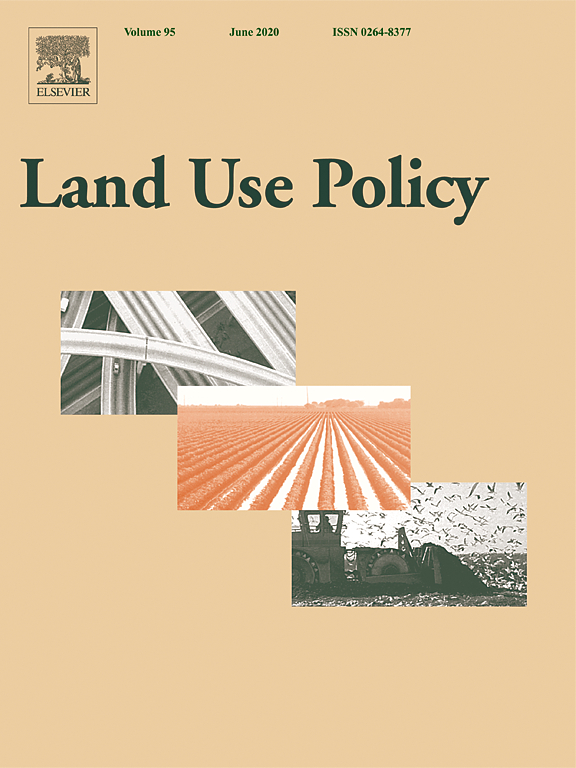Ver ítem
- xmlui.general.dspace_homeCentros Regionales y EEAsCentro Regional Salta - JujuyEEA YutoArtículos científicosxmlui.ArtifactBrowser.ItemViewer.trail
- Inicio
- Centros Regionales y EEAs
- Centro Regional Salta - Jujuy
- EEA Yuto
- Artículos científicos
- Ver ítem
Understanding the adoption of sustainable silvopastoral practices in Northern Argentina: What is the role of land tenure?
Resumen
The Argentinian Dry Chaco has suffered from very high deforestation rates in the last decades, and forest degradation remains an important issue. This study examines the adoption of sustainable silvopastoral practices by smallholder households in the Chaco. Data for the study were collected from 392 families in two municipalities of the Province of Salta. We used multivariate probit (MVP) models to assess land users’ decision to adopt three management
[ver mas...]
The Argentinian Dry Chaco has suffered from very high deforestation rates in the last decades, and forest degradation remains an important issue. This study examines the adoption of sustainable silvopastoral practices by smallholder households in the Chaco. Data for the study were collected from 392 families in two municipalities of the Province of Salta. We used multivariate probit (MVP) models to assess land users’ decision to adopt three management practices. We show that socio-economic factors (household assets, number of animals), human and social capital (literacy, affiliation with a producer organization), as well as access to financial resources (credit) determine adoption. Secured land tenure also increases the likelihood of adoption, but not as much as we initially hypothesized. We discuss how certain specificities of the area, including difficulties accessing land titles and pressure from the agro-industry, as well as the characteristics of the resource itself – forest grazing areas, some shared by multiple families – might explain this unexpectedly low influence of land tenure on the adoption of sustainable silvopastoral practices.
[Cerrar]

Autor
Tschopp, Maurice;
Graziano Ceddia, Michele;
Inguaggiato, Carla;
Bardsley, Nicholas Oliver;
Hernandez, Hernan Hector;
Fuente
Land Use Policy 99 : 105092 (December 2020)
Fecha
2020
Editorial
Elsevier
ISSN
0264-8377
Formato
pdf
Tipo de documento
artículo
Palabras Claves
Derechos de acceso
Restringido
 Excepto donde se diga explicitamente, este item se publica bajo la siguiente descripción: Creative Commons Attribution-NonCommercial-ShareAlike 2.5 Unported (CC BY-NC-SA 2.5)
Excepto donde se diga explicitamente, este item se publica bajo la siguiente descripción: Creative Commons Attribution-NonCommercial-ShareAlike 2.5 Unported (CC BY-NC-SA 2.5)

